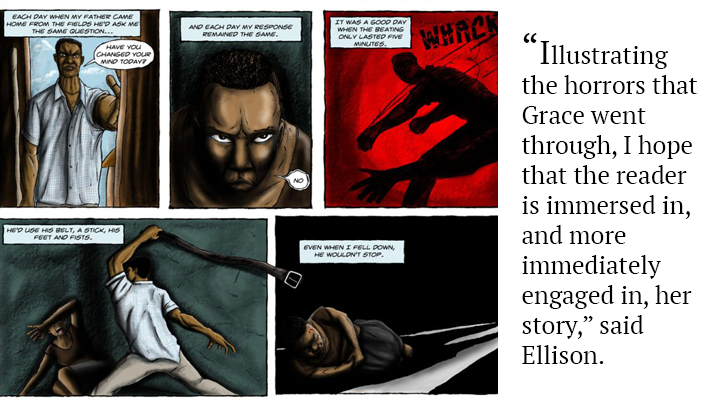Lauren Mucciolo reported in and out of solitary confinement units for three years.
The Brooklyn-based documentary producer remembered hearing about 360-degree video and holograms and realized traditional storytelling methods like those she’d used previously at Frontline and Public Broadcasting Service weren’t enough for this project.

The 39-year-old instead turned to virtual reality to help bring the experiences she witnessed and reported to her global audience.
“We wanted to push the technology to another level,” Mucciolo said in a phone interview. “To feel that claustrophobia, that physical experience that you don’t otherwise get to feel watching a traditional film.”
The Online News Association, meeting this weekend for its annual conference in Washington, D.C., introduced two new categories in acknowledgment of evolving forms of media like those used by Mucciolo. Her piece After Solitary is a finalist in the immersive storytelling category of the Online News Association Awards (OJAs).
The Excellence in Audio Digital Storytelling and Immersive Storytelling categories feature finalists who’ve synthesized various media and developing technology to engage audiences in a variety of topics, including child marriages and the landscape of the Rocky Mountains.
Irving Washington, ONA’s executive director, said the organization looks at its awards regularly to account for evolving media forms.
“The state of journalism is constantly evolving and at a rapid pace, and we thought what we honor should reflect that,” Washington said in an interview Friday.
Mucciolo’s virtual reality piece follows the hologram of Kenny Moore, an ex-offender who spent time in solitary confinement.

News consumers spend time with Moore’s hologram alone in a windowless cell. Mucciolo hopes viewers experience some of what she said are the lasting impacts on Moore’s mental health from his experience in lock-up.
“He had developed all this fear, anxiety and paranoia after having been in solitary,” said Mucciolo. “What stuck with me is to see how his life has been so detrimentally impacted.”
The piece is competing with entries like Al Jazeeera English’s Cash Cow, which is about Grace, a 14-year-old girl forced into child marriage for her family’s financial gain. The graphic novel incorporates both photo and video.
Marc Ellison, a reporter who covers conflicts and issues across Africa, knew this was a story he wanted to illustrate innovatively. The 40-year-old reporter said it was important to draw readers in who may be fatigued by what he said is the media’s traditional reporting on global tragedy and poverty.
“Our eye is drawn far more to imagery,” Ellison said. “Illustrating the horrors that Grace went through, I hope that the reader is immersed in, and more immediately engaged in, her story.”
The graphic novel uses photos and illustrations as it follows Grace’s journey from her abduction, forced marriage and, ultimately, the return to her family.
“During the interview, I kept thinking of how Grace is just a few years older than my niece. That any child should experience something like this is mortifying,” said Ellison.
Also, in the category is the piece called The Fight for Falluja shot by New York Times journalist Ben C. Solomon that uses 360-degree video to chronicle Iraqi forces trying to reclaim a city from ISIS.
In the Excellence in Audio Digital Storytelling category, featuring audio pieces with compelling visuals, the finalists are divided by newsroom size.
Stand at the Edge of Geological Time is a story that transports the viewer to a moment in time at the Rock Mountains through the use of 360-degree images, narration from Oregon State University Professor Eric Kirby and natural noises from the mountains with the use of binaural recording technology.

“The primary audience was going to be using headphones,” said William McQuay, a 65-year-old audio producer in New York. “It does convey that experience of being in the places because it replicates how we perceive sound in the space.”
David Al-Ibrahim worked on the 360-degree visuals for that piece and he said the technology has dramatically evolved since the piece debuted.
“It was very much a prototyping experience,” Al-Ibrahim said. “We were out there with a range of tools that we were trying and testing to figure out what’s the right balance to communicate the story.”
Also, in the category is the Signal Podcast, which explores the process of making medicine. Illustrations that act as cues accompany the ideas presented in the audio episodes.
As ONA looks at these immersive and cutting-edge projects, it also will continue considering how storytelling forms evolve over time.
“Where’s the line between what’s unique and different? And what should stand apart? And what is integrated media?” asked Joshua Hatch, ONA’s president. “Over the years we keep adjusting to find the right balance.”
(Signal podcast/Stat)







You must be logged in to post a comment.